Writers@Work: Building Reader Engagement
February 14, 2017
Note From Rochelle
Dear Writers,
Happy Valentine’s Day!
In honor of Valentine’s Day, I asked some of my favorite authors to talk about how they show love to their readers. This post is a bit longer than my usual posts, so you may want to read it over at the blog.
And if you happen to stop at the blog, take time to enter to win a copy of Fauzia Burke’s new book, Online Marketing for Busy Authors.
Happy Writing!
Rochelle, the Write Now! Coach
Writers@Work: Building Reader Engagement

The first time I saw it, I knew I had to have it: reader engagement.
At a bookstore, I watched an author read from his book to a group of eager listeners. They laughed at all the right parts—and, because many had the book memorized, they sometimes finished sentences for him. The author? Kevin Henkes. The book: Lily’s Purple Plastic Purse. Or maybe it was Chrysanthemum.
Reader engagement. Every author dreams of having readers who love their work enough to seek out their books and recommend them to others. But building reader engagement is a tricky thing. So I asked some of my favorite authors how they connect with their readers. As you can imagine, they had very good advice.
Elizabeth Cole, Choose the Sky
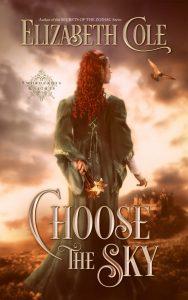 By far my best experience for engaging with readers is my newsletter. It’s simple and it works. While I do include information on my new releases, I never bombard recipients with a request to buy. Most of my newsletter is non-sales stuff. I include a seasonal recipe (like my method for iced coffee in summer, or my family’s Christmas cookies in winter). I list a couple of recent movies I saw that I thought were especially good. I ask readers what they’re reading, or what they’re looking forward to in the year. Don’t think of it as sales—think of it as writing to a friend. Keep your tone natural and casual, and don’t be pushy. Remember that you’re not selling a specific product. You’re actually inviting your readers to get to know you a little better.
By far my best experience for engaging with readers is my newsletter. It’s simple and it works. While I do include information on my new releases, I never bombard recipients with a request to buy. Most of my newsletter is non-sales stuff. I include a seasonal recipe (like my method for iced coffee in summer, or my family’s Christmas cookies in winter). I list a couple of recent movies I saw that I thought were especially good. I ask readers what they’re reading, or what they’re looking forward to in the year. Don’t think of it as sales—think of it as writing to a friend. Keep your tone natural and casual, and don’t be pushy. Remember that you’re not selling a specific product. You’re actually inviting your readers to get to know you a little better.
Norine Dworkin-McDaniel and Jessica Ziegler, Science of Parenthood
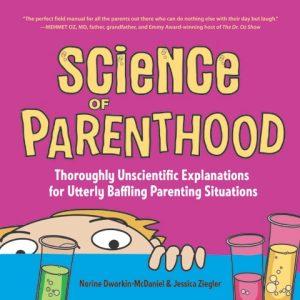 How did we connect with readers during our 2015/2016 book tour for Science of Parenthood: Thoroughly Unscientific Explanations for Utterly Baffling Parenting Situations? We asked our friends to host private readings for their friends where we would sign and sell our books. Essentially, we co-opted the Tupperware Party. I’d seen that model work for performance some years back when my sister hosted a house concert for her singer/songwriter friend Mark Aaron James. James performed two sets on her patio for an audience of 20 to 30 of her friends. Afterward, he passed the hat and autographed CDs he’d brought for sale. Most everyone either dropped a twenty in his hat or bought a signed CD, often both. We decided that that was how we’d sell our books — minus the hat. In the three years that we worked to establish our brand (before we even wrote a line of Science of Parenthood) we’d cultivated a fairly extensive network of fellow parenting bloggers. It was that network that we tapped to host Moms Night Out house parties in 25 cities across the country. Moms would eat, drink and laugh, and, since our book was published a week before Thanksgiving, hopefully buy multiple copies to give as holiday gifts. Each invitation a party host sent to her friends served as her implicit “seal of approval” for us and our book.
How did we connect with readers during our 2015/2016 book tour for Science of Parenthood: Thoroughly Unscientific Explanations for Utterly Baffling Parenting Situations? We asked our friends to host private readings for their friends where we would sign and sell our books. Essentially, we co-opted the Tupperware Party. I’d seen that model work for performance some years back when my sister hosted a house concert for her singer/songwriter friend Mark Aaron James. James performed two sets on her patio for an audience of 20 to 30 of her friends. Afterward, he passed the hat and autographed CDs he’d brought for sale. Most everyone either dropped a twenty in his hat or bought a signed CD, often both. We decided that that was how we’d sell our books — minus the hat. In the three years that we worked to establish our brand (before we even wrote a line of Science of Parenthood) we’d cultivated a fairly extensive network of fellow parenting bloggers. It was that network that we tapped to host Moms Night Out house parties in 25 cities across the country. Moms would eat, drink and laugh, and, since our book was published a week before Thanksgiving, hopefully buy multiple copies to give as holiday gifts. Each invitation a party host sent to her friends served as her implicit “seal of approval” for us and our book.
But then we baited the hook just a little more with the promise of goody bags chocked full of mom must-haves. This was sheer genius on Jessica’s part. She landed us a corporate sponsor—Boogie Wipes—that wanted to connect with our readers as much as we did. Boogie Wipes’ parent company, Nehemiah Manufacturing, paid for our travel and filled our party bags with the mom-friendly product samples that they wanted to introduce to our audience. Finally, we did drawings for Science of Parenthood swag at all of our Moms Night Out parties: guests filled out cards for the drawing in which winners received a fridge magnet of our most popular cartoon, The Mother’s Homework Prayer—and we captured their emails addresses for future marketing.
Timothy Hallinan, Fields Where They Lay
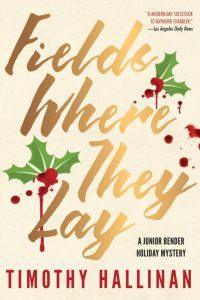 I write to music about 80% of the time, and when I started publishing my two current series, I began to write a short afterword to each. I talked about the issues in the book and anything else I thought might interest a reader who had just finished it, and just for fun I also credited the musical artists who helped e write it. This is always a very broad list, running from rock to country to classical. At the end of each music list I ask readers to recommend new music to me via my website. Thousands and thousands of people have responded. In every case, I write a thank-you note and ask if I can add that reader to my newsletter email list. As of now, I have more than 12,000 subscribers to the newsletter, and if I use the mailing wisely, I can actually see sales bumps. I make the newsletters as entertaining as possible, with everything from jokes to reviews of books I’ve particularly liked. This newsletter is easily my most important promotional asset.
I write to music about 80% of the time, and when I started publishing my two current series, I began to write a short afterword to each. I talked about the issues in the book and anything else I thought might interest a reader who had just finished it, and just for fun I also credited the musical artists who helped e write it. This is always a very broad list, running from rock to country to classical. At the end of each music list I ask readers to recommend new music to me via my website. Thousands and thousands of people have responded. In every case, I write a thank-you note and ask if I can add that reader to my newsletter email list. As of now, I have more than 12,000 subscribers to the newsletter, and if I use the mailing wisely, I can actually see sales bumps. I make the newsletters as entertaining as possible, with everything from jokes to reviews of books I’ve particularly liked. This newsletter is easily my most important promotional asset.
Jeanette Hurt, Drink Like a Woman
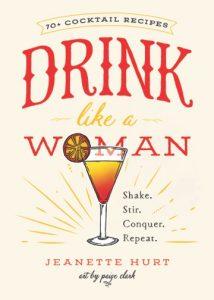 I’ve been reaching out to visitors on Instagram…and videos seem to work best. A good friend of mine, Jules Aron, who wrote Zen and Tonic, said she learned she needs to post three times a day. Another good friend, Damon Brown, who wrote The Bite-Sized Entrepreneur (and dozens of other books) suggested using a reposting app to do more posts. I’m not there yet, but the more I post, the more followers I get, and the more traction my book gets. Here’s my favorite book posting on Instagram: Drink Like a Woman.
I’ve been reaching out to visitors on Instagram…and videos seem to work best. A good friend of mine, Jules Aron, who wrote Zen and Tonic, said she learned she needs to post three times a day. Another good friend, Damon Brown, who wrote The Bite-Sized Entrepreneur (and dozens of other books) suggested using a reposting app to do more posts. I’m not there yet, but the more I post, the more followers I get, and the more traction my book gets. Here’s my favorite book posting on Instagram: Drink Like a Woman.
That said, the best thing, I’ve found for my latest book, Drink Like a Woman, is to host events at bars. That is where my readers are, and once they hold my book in their hands, it sells itself.
Daniel Maurer, Sobriety: A Graphic Novel
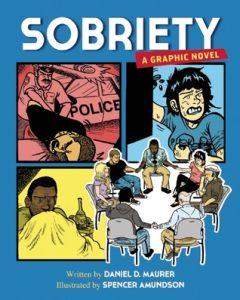 With hundreds of thousands (if not millions) of writers online worldwide, the competition for people’s attention is stiff. Believe me, I get it. Indie writers need to establish a solid web presence and be on social media. The question I’ve asked myself is: “How does social media work?” Well . . . you need to be social. For me, that means engaging with other people’s lives. Really engaging—not just clicking like or heart out of impulse that you “care.” Read others’ work. Ask questions about their funny cat pictures. Visit and comment on their blogs. Be genuine. I think there are many writers out there who think that simply being on social media will attract others to your work. It doesn’t work that way. I like to look for the stories others are telling that I think will drive people’s interest. They’re out there, believe me. You just need to listen and engage. My non-fiction brand deals with the process of personal transformation and resilience. I regularly write on my blog, but I also host many other writers, artists, tattoo aficionados, and musicians to share their passion. It’s been a successful strategy and my website gets a ton of hits, mostly because I’m genuinely interested in other people’s viewpoints. I’ve created Transformation is Real as a sounding board for others’ stories. If they buy my books, all the better. But you can’t be in people’s faces—it’s called shameless self-promotion for a reason!
With hundreds of thousands (if not millions) of writers online worldwide, the competition for people’s attention is stiff. Believe me, I get it. Indie writers need to establish a solid web presence and be on social media. The question I’ve asked myself is: “How does social media work?” Well . . . you need to be social. For me, that means engaging with other people’s lives. Really engaging—not just clicking like or heart out of impulse that you “care.” Read others’ work. Ask questions about their funny cat pictures. Visit and comment on their blogs. Be genuine. I think there are many writers out there who think that simply being on social media will attract others to your work. It doesn’t work that way. I like to look for the stories others are telling that I think will drive people’s interest. They’re out there, believe me. You just need to listen and engage. My non-fiction brand deals with the process of personal transformation and resilience. I regularly write on my blog, but I also host many other writers, artists, tattoo aficionados, and musicians to share their passion. It’s been a successful strategy and my website gets a ton of hits, mostly because I’m genuinely interested in other people’s viewpoints. I’ve created Transformation is Real as a sounding board for others’ stories. If they buy my books, all the better. But you can’t be in people’s faces—it’s called shameless self-promotion for a reason!
Jane Rubietta, Worry Less So You Can Live More
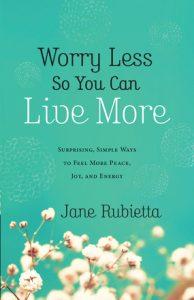 Publishing is a huge dream for so many people. Until the book releases, and the publisher is on to their next deal. Until the royalty statement lands in your mailbox or inbox. You’re left with a carton full of books, a message you want to share, and all your hopes sitting in the publisher’s warehouse.
Publishing is a huge dream for so many people. Until the book releases, and the publisher is on to their next deal. Until the royalty statement lands in your mailbox or inbox. You’re left with a carton full of books, a message you want to share, and all your hopes sitting in the publisher’s warehouse.
Connecting with readers is a primary way to sell books–which seems to be a problem if you don’t have readers in the first place. I quit waiting for publishers to sell my books and picked up the microphone. The single most effective tool for reaching my audience and hearing what’s happening in their mind and life and soul and heart has been speaking. It has helped me to write books that are relevant to them, because I hear them. Whether you are an introvert or an extrovert, listen to their lives, ask them questions from the lectern and when you are hanging out with them. Come early to the event, stay late.
Speaking helps me connect with the reader…and it sure helps the bottom line, too. Figure out who your audience is, find out where they gather, and pull up a podium. Cart in your books and make sure they are in the room where you are gathering (otherwise, out of sight, out of mind).
But books don’t fly off the table even if you are the most dynamic speaker in the business. (Well, that sure doesn’t hurt anything, so practice your talks before you deliver them.) At the end of the first speech, I give a five-minute schtick about most of my books. Make it funny and informative, so they learn a little more about you as a person and why they need your books (note: plural–you want them to buy more than one!). This keeps the overview from feeling sales-pitchy.
Most speakers sell about 10 percent: if 100 people sit in the audience, they’ll sell ten books. Remember, the more you engage them, love on ’em, encourage them, the more you will sell. My goal is always 100 percent—100 percent laughter, fun, and life-changing help.
About the Authors
Elizabeth Cole, Choose the Sky

Elizabeth Cole is an author of historical romance. She can be found hanging around museums, coffeeshops, and graveyards…but not after dark. Elizabeth loves hearing from readers, because otherwise she starts taking the cat’s advice a little too seriously. Connect with her and sign up to get early alerts for new titles at elizabethcole.co
Norine Dworkin-McDaniel and Jessica Ziegler, Science of Parenthood
 Norine Dworkin-McDaniel and Jessica Ziegler are the co-creators of the illustrated humor blog ScienceOfParenthood.com, named one of Parenting.com’s “blogs every parent should read.” Together, the duo, voted among TODAYParents’ “funniest parents of 2015,” has published The Big Book of Parenting Tweets, The Bigger Book of Parenting Tweets and the award-winning Science of Parenthood: Thoroughly Unscientific Explanations for Utterly Baffling Parenting Situations. Follow them at www.facebook.com/ScienceOfParenthood
Norine Dworkin-McDaniel and Jessica Ziegler are the co-creators of the illustrated humor blog ScienceOfParenthood.com, named one of Parenting.com’s “blogs every parent should read.” Together, the duo, voted among TODAYParents’ “funniest parents of 2015,” has published The Big Book of Parenting Tweets, The Bigger Book of Parenting Tweets and the award-winning Science of Parenthood: Thoroughly Unscientific Explanations for Utterly Baffling Parenting Situations. Follow them at www.facebook.com/ScienceOfParenthood
Timothy Hallinan, Fields Where They Lay
 Timothy Hallinan is the Lefty-winning, Edgar-nominated author of twenty-two published novels. He currently writes two series: the Poke Rafferty Bangkok thrillers and the Junior Bender mysteries, set in Los Angeles. He has homes in Santa Monica and Thailand. He’s at www.timothyhallinan.com
Timothy Hallinan is the Lefty-winning, Edgar-nominated author of twenty-two published novels. He currently writes two series: the Poke Rafferty Bangkok thrillers and the Junior Bender mysteries, set in Los Angeles. He has homes in Santa Monica and Thailand. He’s at www.timothyhallinan.com
Jeanette Hurt, Drink Like a Woman
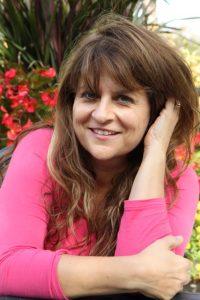 Jeanette Hurt is the award-winning writer and author of eight culinary and drink books, including The Cheeses of California: A Culinary Travel Guide, which received the 2010 Mark Twain Award for Best Travel Book, and The Complete Idiot’s Guide to Wine and Food Pairing. As full-time journalist, Jeanette has written about spirits, wine, and food for TheKitchn.com, Four Seasons Magazine, Wine Enthusiast, Entrepreneur.com, Esquire.com, and dozens more publications. Visit her online at JeanetteHurt.com
Jeanette Hurt is the award-winning writer and author of eight culinary and drink books, including The Cheeses of California: A Culinary Travel Guide, which received the 2010 Mark Twain Award for Best Travel Book, and The Complete Idiot’s Guide to Wine and Food Pairing. As full-time journalist, Jeanette has written about spirits, wine, and food for TheKitchn.com, Four Seasons Magazine, Wine Enthusiast, Entrepreneur.com, Esquire.com, and dozens more publications. Visit her online at JeanetteHurt.com
Daniel Maurer, Sobriety: A Graphic Novel
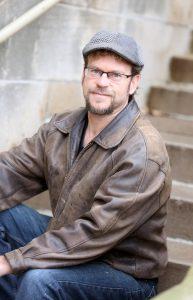 Daniel D. Maurer is an award winning author of four books and a freelance writer. He lives in St. Paul, Minnesota with his family. He keeps the website and blog at Transformation is Real.
Daniel D. Maurer is an award winning author of four books and a freelance writer. He lives in St. Paul, Minnesota with his family. He keeps the website and blog at Transformation is Real.
Jane Rubietta, Worry Less So You Can Live More
 Jane Rubietta speaks internationally and has written 19 books. She co-directs the Write-to-Publish writers conference held annually in Wheaton, IL. For more info, see Jane Rubietta Meanwhile, learn how to quit worrying and start living with her critically acclaimed book, Worry Less So You Can Live More.
Jane Rubietta speaks internationally and has written 19 books. She co-directs the Write-to-Publish writers conference held annually in Wheaton, IL. For more info, see Jane Rubietta Meanwhile, learn how to quit worrying and start living with her critically acclaimed book, Worry Less So You Can Live More.









Looks great!
Such great information and tips here! And I’m not just saying that because we’re included. I’m banking all of this great advice for connecting more effectively with our readers. Thank you for such an informative read!